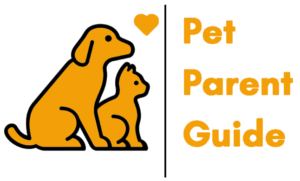
Keeping Your Dog’s Coat and Skin Healthy at Home! : Taking care of your dog’s coat and skin is crucial for their overall health and happiness. Dog grooming at home, even for beginners, is a worthwhile endeavour. Grooming for dogs involves more than just keeping them clean—it’s about maintaining their well-being. By following grooming dog tips, you can ensure your furry friend’s coat stays in top shape.
Investing in proper grooming dog equipment, such as brushes and combs, is essential. A grooming dog kit makes it easier to have all the necessary tools at hand. Regular brushing helps remove loose fur, prevents mats, and promotes healthy hair growth. Bathing your dog with gentle shampoo keeps its coat clean and free from irritants.
Trimming nails and cleaning ears reduces the risk of infections. By prioritizing your dog’s coat and skin health, you’ll contribute to their overall happiness and strengthen your bond along the way.
Dog grooming equipment you must have
When it comes to dog grooming at home, having the right equipment is key. By being equipped with the right grooming dog equipment, you’ll be well-prepared to keep your furry friend’s coat and skin healthy, all in the comfort of your own home.
Remember, having a comprehensive grooming dog kit that includes these essential items will make your grooming routine smoother and more efficient.
- Brushes and Combs: Invest in a variety of brushes and combs suitable for your dog’s coat type. This helps to remove tangles, prevent matting, and keep their fur looking neat.
- Nail Clippers: Trimming your dog’s nails is crucial for their comfort and health. Get a good pair of nail clippers designed specifically for dogs.
- Dog Shampoo: Choose a gentle and dog-friendly shampoo to keep their coat clean and free from dirt and allergens.
- Towels: Have a few absorbent towels handy for drying your dog after a bath or a rainy walk.
- Ear Cleaner: Regularly cleaning your dog’s ears can prevent infections. Use a dog-specific ear cleaner and cotton balls for this task.
- Toothbrush and Toothpaste: Dental care is important. Get a dog toothbrush and toothpaste to keep their teeth clean and healthy.
- Grooming Scissors: Have a pair of grooming scissors for trimming the hair around sensitive areas like the eyes, paws, and ears.
- Grooming Table: A grooming table can make the process easier by providing a stable surface and preventing back strain.
- Styptic Powder: Accidents happen, and if you accidentally cut your dog’s nail too short, the styptic powder helps stop bleeding.
- Treats and Rewards: Make grooming a positive experience by rewarding your dog with treats and praise. This encourages cooperation and makes grooming sessions enjoyable.
11 useful tips for dog grooming at home
Dog grooming for beginners at home is a learning experience, so be patient and take your time. Over time, you’ll develop a routine that works best for you and your furry friend.
By following these tips, you’ll be able to maintain your dog’s coat and skin health while strengthening the bond between you and your four-legged companion. Enjoy the process and have fun grooming your beloved pet at home!
- Start with the right grooming dog equipment: High-quality brushes, combs, nail clippers, and other tools ensure effective grooming at home, promoting your dog’s well-being and maintaining their coat’s health and appearance.
- Get your dog accustomed to grooming gradually: Introduce short grooming sessions initially, gradually extending the time to avoid overwhelming your dog, making the process more enjoyable and stress-free for both of you.
- Brush regularly: Frequent brushing not only prevents matting but also promotes healthy fur growth, keeping your dog’s coat shiny, tangle-free, and free from dirt and debris.
- Use a gentle shampoo: Choosing a dog-friendly shampoo suitable for your dog’s coat type ensures a thorough yet gentle cleaning, avoiding irritation and maintaining their skin’s natural balance.
- Be mindful of water temperature: Lukewarm water during baths ensures your dog’s comfort, making bathing a pleasant experience and reducing any fear or discomfort they may associate with it.
- Pay attention to ears and teeth: Regular ear cleaning with a dog-specific cleaner and proper dental care with a dog toothbrush and toothpaste promote overall hygiene and health.
- Trim nails carefully: Using appropriate nail clippers and being cautious not to cut too close prevents pain and discomfort for your dog during nail trimming.
- Take it slow with sensitive areas: Gently trim the hair around delicate spots like the eyes or paws, using grooming scissors carefully to avoid accidents and make your dog feel at ease.
- Give your dog breaks: Watch for signs of restlessness or anxiety during grooming, and take breaks as needed, offering treats and praise to keep them calm and cooperative.
- Use positive reinforcement: Rewarding your dog with treats, praise, and affection throughout the grooming process creates a positive association, making future sessions more enjoyable for your furry friend.
- Seek professional help when needed: Don’t hesitate to consult a professional groomer for guidance or assistance with challenging grooming tasks, ensuring your dog’s well-being and safety during the process.
Benefits of regular dog grooming
Whether you’re a beginner or an experienced groomer, taking care of your dog’s grooming needs is an essential part of responsible pet ownership. Embrace the rewards of regular grooming as you and your furry friend embark on a journey of well-being and a closer bond.
- Healthy Coat and Skin: Grooming your dog promotes a healthy coat and skin by removing dirt, dead hair, and dandruff, reducing the risk of skin irritations and infections.
- Shedding Control: Regular brushing helps control shedding, keeping your home cleaner and reducing the amount of fur your dog leaves behind.
- Bonding Time: Grooming sessions provide an opportunity for bonding and strengthening the relationship between you and your dog.
- Early Detection of Health Issues: Through grooming, you can identify any lumps, bumps, rashes, or abnormalities on your dog’s body, allowing for early detection of potential health issues.
- Improved Hygiene: Bathing your dog and cleaning their ears and teeth during grooming sessions helps maintain good hygiene and freshens their breath.
- Nail Health: Regular nail trimming prevents overgrowth, discomfort, and potential injuries, ensuring your dog’s paws stay healthy.
- Stress Reduction: Consistent grooming routines help familiarize your dog with the process, reducing stress and anxiety associated with grooming.
- Enhanced Appearance: Regular grooming leaves your dog looking clean, well-groomed, and visually appealing.
- Comfort and Well-being: Trimming excess hair around sensitive areas like the eyes, ears, and paws improves your dog’s comfort and overall well-being.
- Prevention of Matting and Tangles: Regular brushing prevents matting and tangles, saving your dog from discomfort and potential skin issues.
To Conclude
Regular dog grooming offers numerous benefits, including a healthy coat and skin, shedding control, bonding time, early detection of health issues, improved hygiene, nail health, stress reduction, enhanced appearance, and prevention of matting and tangles.
Whether you choose to groom your dog at home or seek professional services, prioritizing grooming will contribute to your dog’s overall well-being and strengthen your bond. Embrace the rewarding experience of regular grooming and enjoy the positive impact it has on your furry friend’s health and happiness.
Frequently Asked Questions
Q1. Can I groom my dog at home even if I’m a beginner?
A1. Absolutely! Dog grooming at home is possible for beginners. Start with basic tasks like brushing and nail trimming, gradually building your skills and comfort level. Remember to use proper grooming dog equipment and seek guidance if needed.
Q2. How often should I groom my dog?
A2. The frequency of grooming depends on your dog’s breed, coat type, and lifestyle. Generally, regular brushing is recommended, while baths can be done every few weeks or as needed. Adjust the grooming schedule based on your dog’s specific needs.
Q3. What if my dog doesn’t enjoy grooming?
A3. Some dogs may be initially resistant to grooming. Be patient, introduce grooming gradually, and use positive reinforcement. Offer treats, praise, and breaks during the process. Over time, most dogs learn to tolerate and even enjoy grooming.
Q4. When should I seek professional grooming services?
A4. Professional grooming services may be beneficial if you lack the time, skills, or equipment for certain grooming tasks. Additionally, some breeds with specific grooming requirements may benefit from professional expertise to ensure proper care. Consult a professional groomer when in doubt or for more complex grooming needs.

